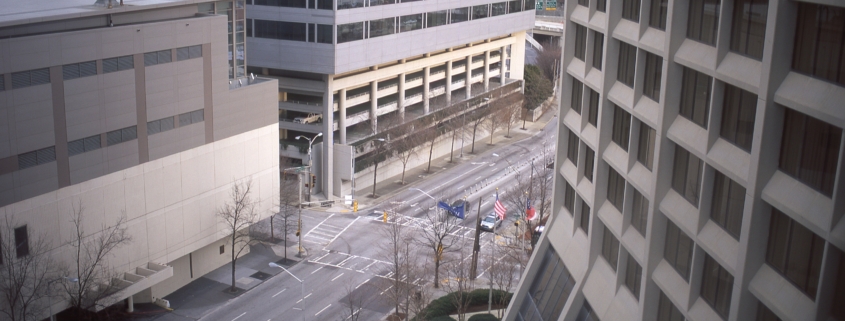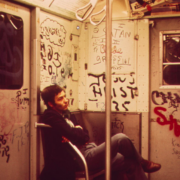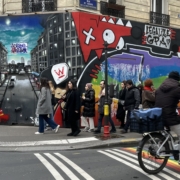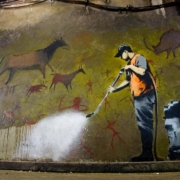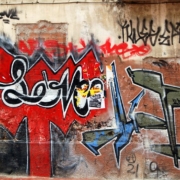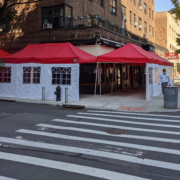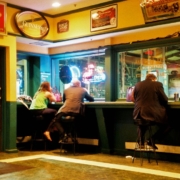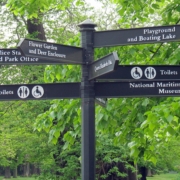Softening the brutalism of big downtown hotels and areas where they are located
Almost every big North American city has a part of their downtown where tall, frequently imposing, and well-known brand name hotels are located.
Sometimes these structures are built beside each other or sprinkled among the equally massive office towers, apartments, and condos.
Occasionally they are integrated into a central business district where a variety of retail stores and businesses operate and where people may work or live.
Catering to business travelers, tourists, and conference goers, these hotels are often close to shopping malls, food courts, transportation hubs (e.g., train or subway stations), convention centers, and entertainment venues.
Built out of tons of concrete, steel and glass, the hotels may be connected by skywalks or skybridges or underground tunnels. This often means that guests do not need to go beyond a small square two-three block radius to get their business done before departing the city.
In some cities, guests who use these hotels, may not need to set foot on to the mean city streets if they want to get their business done.
If patrons are so daring as to venture outside the protective enclosure, it’s easy to get turned around going from one building to another, as the structures and the topography often look the same. Try this during the winter, and the winds rip between the buildings and hits you like a slap on the face and you curse your fate.
Good things about these parts of the city?
These structures and areas present a number of benefits to the owners, the people who work and visit there.
If you are staying at one of these hotels you may be afforded a great view of the city, which has its own intrinsic benefits.
Moreover there’s not much need for the architects and contractors to be creative. The buildings are no Corbusier’s, they pretty much look the same, mundane in appearance, even boring.
For the tourist or business traveler these buildings and locations are incredibly convenient. Visitors can meet their clients at the hotel, eat nearby, and then go their merry way.
Drawbacks to the concentration of hotels in the same downtown areas of cities
Indeed there are drawbacks and they are relative to your needs, wants, and desires.
One would be foolhardy to assume that you have experienced the soul of the city by visiting this area. Quite the opposite. These areas in physical features are just about as interchangeable as any other city.
Drop me into downtown New York City, Chicago, and Atlanta, and there is a sameness and predictability. That’s okay if you want this kind of experience.
But the sameness is boring, demonstrates a lack of creativity and over time has a soul crushing effect.
In a small subtle way, akin to the living and working in the suburbs, or vacationing at east coast beach towns, highway service areas, and resorts, it contributes to the alienation that is rampant in American society.
Make no mistake, it’s not a neighborhood, in the typical sense of the term. And nobody promised it would be.
Some solutions
One way to address this monotony is for the building owners to do something more engaging with their exteriors. How about commissioning some murals to combat the drabness? This process could start by identifying which surfaces would benefit the most from murals, and then there could be some sort of a design competition judged by experts.
Urban dwellers could also encourage city planners to only give building permits to hotel developers if they are willing to locate them in mixed use parts of the city. This plan could be accompanied economic incentives like tax breaks to encourage other types of structures etc. in the area.
Another suggestion might be the issuing permits to street vendors and/or food trucks.
It does not have to be every day, but on a semi regular basis.
Like New York City, every weekend avenues are blocked off and vendors set up kiosks where they sell food, clothing etc. In this way public spaces are being energized.
There are ways to enhance what is typically a boring experience. It just takes the willingness to experiment, be a little more creative and the resources to enable these small changes are minimal.
Photo Credit
Photographer: fklv (Obsolete hipster)
Title Atlanta (Hilton)

